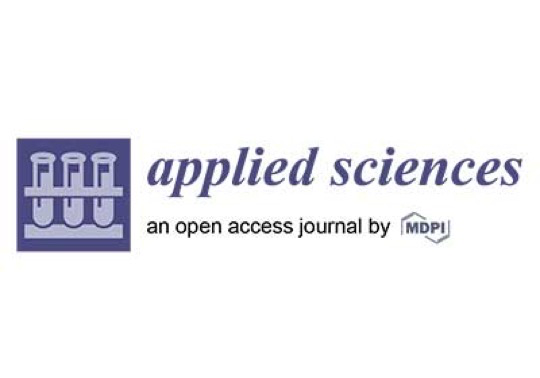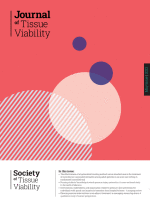Diabetic Foot Ulcer
How to submit an article:
- Registered users can submit any published journal article that has a unique DOI (Digital Object Identifier) name or link to Research Hub.
- For example, you can paste the full DOI link:
https://doi.org/10.1109/5.771073or just the DOI name:10.1109/5.771073into the field above and click submit. - The person who is first to submit a valid article to Research Hub will forever be credited for it, and every article submission earns you +6 Research Points.
Related Topics
Published research studies are articles that present the findings of original research that has undergone a peer-review process and has been made publicly available in scholarly journals, books or other media.

Honey Therapy in Diabetic Foot Ulcers: A Promising Strategy for Effective Wound Healing
2023 Nov 29 Applied Sciences Bezerra A, Fonseca H, Rodrigues F, Delerue-Matos C, Gouvinhas I, Garcia J
Review Article Wound HealingHoney accelerates the healing of diabetic foot ulcers, reduces wound size, and lowers the rates of amputation or hospitalisation, making it a cost-effective and safe treatment.

Use of honey in diabetic foot ulcer: Systematic review and meta-analysis
2023 May Journal of Tissue Viability Yildiz Karadeniz E, Kaplan Serin E
Systematic Review Meta-Analysis Honey Wound HealingHoney dressing significantly promotes healing and reduces recovery time in managing diabetic foot ulcers.
Research insights are moderated by the Research Hub team and offer an at-a-glance overview of interesting research findings.

2023 Applied Sciences
Honey accelerates the healing of diabetic foot ulcers, reduces wound size, and lowers the rates of amputation or hospitalisation, making it a cost-effective and safe treatment.
Review Article Wound Healing
Honey Therapy in Diabetic Foot Ulcers: A Promising Strategy for Effective Wound Healing
Bezerra A, Fonseca H, Rodrigues F, Delerue-Matos C, Gouvinhas I, Garcia J

2023 Journal of Tissue Viability
Honey dressing significantly promotes healing and reduces recovery time in managing diabetic foot ulcers.
Systematic Review Honey Wound Healing
Use of honey in diabetic foot ulcer: Systematic review and meta-analysis
Yildiz Karadeniz E, Kaplan Serin E
Review Articles
Review articles summarise and critically evaluate the current state of research on a specific topic or field by synthesising multiple primary research studies.

Honey Therapy in Diabetic Foot Ulcers: A Promising Strategy for Effective Wound Healing
2023 Nov 29 Applied Sciences Bezerra A, Fonseca H, Rodrigues F, Delerue-Matos C, Gouvinhas I, Garcia J
Review Article Wound HealingHoney accelerates the healing of diabetic foot ulcers, reduces wound size, and lowers the rates of amputation or hospitalisation, making it a cost-effective and safe treatment.

Use of honey in diabetic foot ulcer: Systematic review and meta-analysis
2023 May Journal of Tissue Viability Yildiz Karadeniz E, Kaplan Serin E
Systematic Review Meta-Analysis Honey Wound HealingHoney dressing significantly promotes healing and reduces recovery time in managing diabetic foot ulcers.
Clinical Trials
Clinical trials are research studies that involve people and are conducted to evaluate the safety and efficacy of new treatments or interventions, such as drugs, medical devices, or behavioural therapies.
Study Protocols
Published study protocols are detailed plans that outline the objectives, methodology, statistical analyses, and organisation of a research study that have been made publicly available for others to review and use as a reference.
Presentation Slides

Review Article
Honey accelerates the healing of diabetic foot ulcers, reduces wound size, and lowers the rates of amputation or hospitalisation, making it a cost-effective and safe treatment.
Bezerra A, Fonseca H, Rodrigues F, Delerue-Matos C, Gouvinhas I, Garcia J

Systematic Review
Honey dressing significantly promotes healing and reduces recovery time in managing diabetic foot ulcers.
Yildiz Karadeniz E, Kaplan Serin E
Executive Summary
Write an executive summary in the form of a blog article on the topic of "Research into Chinese medicine treatment for Diabetic Foot Ulcer" summarising the research below and using language that can be easily understood by patients and avoiding medical jargon using a professional and caring tone of voice.
Write an executive summary in the form of a blog article on the topic of "Researched Chinese medicine treatments for Diabetic Foot Ulcer" summarising the research below in an objective and easy to understand way, and using language that can be easily understood by patients. Group the article into Chinese medicine treatments first, followed by nutrition and other treatments. Avoid using medical jargon and use a professional and caring tone of voice.
Write me a concise but easy to understand executive summary on the topic of "Chinese medicine treatments for Diabetic Foot Ulcer" based on the following research that I will give you. Your summary should be 2 paragraphs long in Australian English spelling and include references to the studies.
A Review Article published in 2023 in the journal Applied Sciences found that Honey accelerates the healing of diabetic foot ulcers, reduces wound size, and lowers the rates of amputation or hospitalisation, making it a cost-effective and safe treatment. The methodology of the review incorporated studies exploring the effects of honey on wound healing, emphasizing its impact on diabetic foot ulcers (DFUs). Different types of honey and their potential influence on treatment efficacy were considered. The review also scrutinised the mechanisms by which honey promotes wound healing and how honey dressings are utilized in the management of diabetic wounds. Nonetheless, it was noted that few of the studies provided comprehensive data regarding the specific characteristics of the employed honey, affecting the comparison across honey types. The discussion of the results found in most clinical studies indicated that DFUs treated with honey resulted in rapid wound healing, substantial wound contraction, and decreased rates of amputation or hospitalisation. The properties of honey - serving as an effective antibacterial agent against multidrug-resistant bacteria and fostering wound healing through its physical-chemical attributes - were found to be the underlying reasons for these positive outcomes. Furthermore, honey was deemed to be a cost-effective and safe option for managing DFUs.
A Systematic Review published in 2023 in the journal Journal of Tissue Viability found that Honey dressing significantly promotes healing and reduces recovery time in managing diabetic foot ulcers. For the research methodology, the study used a combination of randomized controlled trials, quasi-experimental, and cross-sectional studies. Only the randomized controlled trials and quasi-experimental studies were chosen for the meta-analysis, while observational studies were subject to a descriptive analysis. In terms of the results discussion, the meta-analysis indicated that using honey as a dressing for diabetic foot ulcers resulted in a reduction in wound recovery time, pain experienced, duration of hospital stay, and an acceleration in wound granulation. Therefore, it was concluded that honey dressing is an effective intervention for accelerating healing in diabetic foot ulcers.
Moderation Tools
Topic
Sign In
Users not signed in are limited to viewing the 5 most recent items of content.